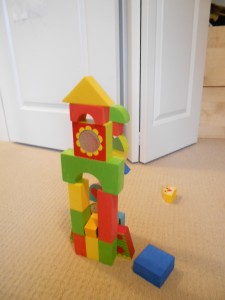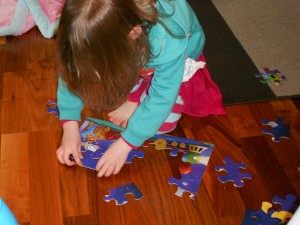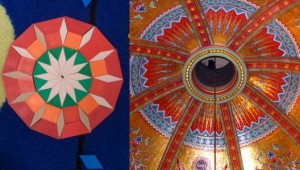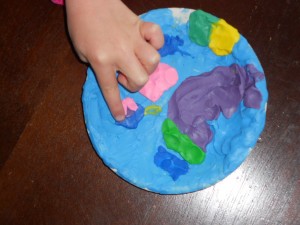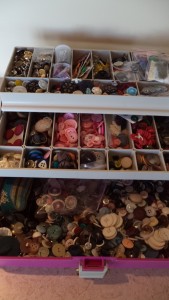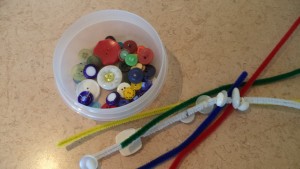Understanding same and different begins about the age of three and up. Like other reasoning abilities, this develops as kids play.
A set of 4 colored mats can be a very practical toy. They are bright and colorful as well as soft for some whole body fun and make a quiet landing space for play with blocks. The edges sort of zip off so the mats can be combined in a variety of ways.
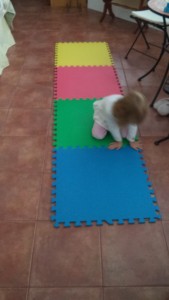 Little Sister wanted the mats do some exercises while I did mine. Most of her exercise, both mental and physical, happened as she put the mats together. First, she zipped off the edges and set one mat on the floor. She attached another to one end and made a long, straight road. Then, she put the edges back on, but this time she choose different colors. When she only had 3 edges left, she had to stop and look several times so she didn’t have any edges that matched the big squares. She thought of a solution by putting some of the edge pieces on the ends rather than the side.
Little Sister wanted the mats do some exercises while I did mine. Most of her exercise, both mental and physical, happened as she put the mats together. First, she zipped off the edges and set one mat on the floor. She attached another to one end and made a long, straight road. Then, she put the edges back on, but this time she choose different colors. When she only had 3 edges left, she had to stop and look several times so she didn’t have any edges that matched the big squares. She thought of a solution by putting some of the edge pieces on the ends rather than the side.
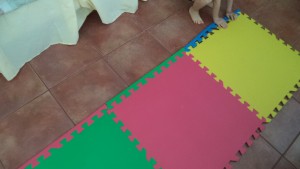 Same or different is usually pretty evident to us so we assume it is for children too. To be able to judge though if two things are the same, kids have to look at specific parts of objects.
Same or different is usually pretty evident to us so we assume it is for children too. To be able to judge though if two things are the same, kids have to look at specific parts of objects.
Very young children are confused when a familiar adult shaves a beard or gets new glasses. It takes time for them to sort out that this is the same person even though something is different. Older kids may still have issues with same and different. A sandwich cut in squares inside of in triangles is not the same. It may taste the same, it may look the same, it may have the exact same ingredients, but somehow it is too different.
As your child plays, you can ask if two or more items are same or different. Talk about them when there is an opportunity. Check things out together and look at colors. Although this seems easy, think of how precise the skill needs to be to tell the difference between a ‘b’ and a ‘d’ or a ‘9’ and a ‘6.’ As with other thinking skills, kids will need practice and play is the most fun for understanding same and different. How will your child play today?

